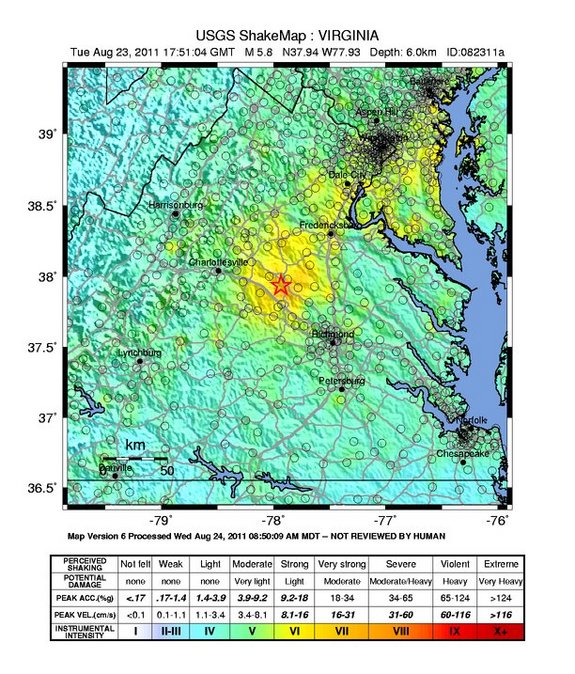
While NASA often sets its sights on the heavens, the space agency is still affected by events here on terra firma — like yesterday's East Coast earthquake.
The 5.8-magnitude temblor — the biggest quake in the region in more than 100 years — struck near the small Virginia town of Mineral yesterday morning (Aug. 23). It then radiated outward, shaking the ground in dozens of states.
Several nearby NASA research and administration centers felt the jolt. NASA headquarters in Washington, D.C., for example, was evacuated briefly yesterday, agency officials said. [Infographic: Earthquake Shakes Northeastern US]
"Wow! An earthquake at NASA HQ in DC, and I thought technology was exciting..." NASA chief technologist Bobby Braun tweeted yesterday.
Goddard Space Flight Center, in Greenbelt, Md., did not evacuate. However, Goddard did declare a "Code Red" at about 3 p.m. EDT yesterday. While that sounds scary, a Code Red simply closes the center to nonessential personnel.
Officials then did a thorough assessment of Goddard's buildings, making sure none sustained any serious damage. That work was finished by about 4 a.m. today, officials said, and the center resumed normal operations.
The quake does not appear to have caused any lasting damage to NASA's centers, assets or infrastructure, officials said. The main impact may have been shock or surprise. Goddard personnel, for example, are trained to deal with blizzards and hurricanes — typical East Coast scenarios.
Sign up for the Live Science daily newsletter now
Get the world’s most fascinating discoveries delivered straight to your inbox.
"I can tell you, we don't exercise often to prepare for an earthquake," said Ray Rubilotta, deputy director for management operations at Goddard.
But that will probably change.
"Even if there's not another big quake for 100 years, we'll definitely have an earthquake checklist now," Rubilotta told SPACE.com.
This story was provided by SPACE.com, sister site to Live Science. You can follow SPACE.com senior writer Mike Wall on Twitter: @michaeldwall. Follow SPACE.com for the latest in space science and exploration news on Twitter @Spacedotcom and on Facebook.











